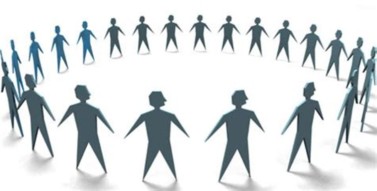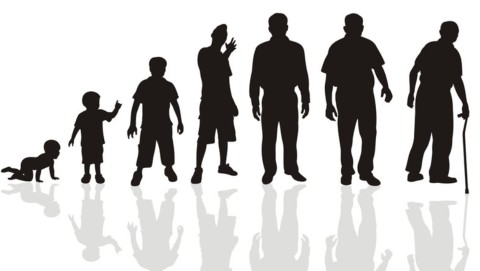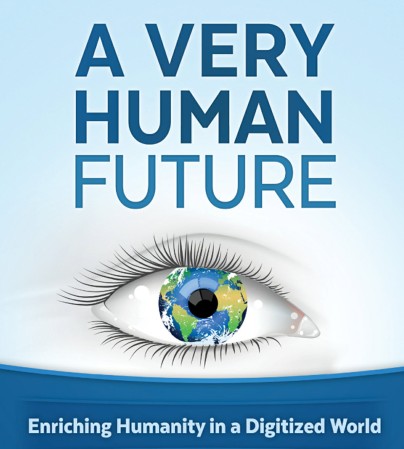I had the pleasure of hosting two sessions recently at the TCS Innovation Forums in London and in New York City. The sessions, which explored the need to prepare for the future, involved thought leaders, futurists, and various leaders across multiple domains. They were structured with several five-minute descriptions of forward-looking themes, and once context was set, a discussion with the broader leadership group was moderated. The sessions focused on education and awareness, rooted in a strong belief that leaders must prepare for and shape our emerging future. Leaders of the early 20th century were experiencing the fascination of a great period of invention, while at the same time the horror of crisis. That crisis, in the form of World War One, the Great Depression, and World War Two, served as a catalyst that mobilized human action. Without it, the democratization of innovation and the most prosperous period in our human history likely never happens – at least not to the extent that it did.
It is my belief that similarities exist between the era of great invention and today. Future historians may look back and deem this emerging era to be the greatest in human history. However, as described in my post on Mapping the Path of Innovation, human action must again be mobilized if we are to shape a future of human flourishing versus suffering. What are the catalysts that mobilize human Action this time? I shared the results of a Poll I Conducted to provide a point of view. This critical need was first positioned in a post that summarized What I Expect in 2019.
To open the sessions, I shared three key themes from my expectation post: Acceleration, Possibilities, and Convergence. If we truly are entering another period of great invention, what action is required by leaders to ensure a positive path forward? This post will summarize the key themes from the TCS London Session, positioning the importance of answering that question. I will follow this with a summary of the New York session.
THE FUTURE OF BUSINESS AND SOCIETY: Rohit Talwar, CEO Fast Future
There are four forces making companies increasingly uncomfortable today: technology, competency and skills, ability to prioritize, and climate change. Questions abound: Is technology productive? While firms like Apple have been successful, other firms are left behind with legacy systems and poor data. Is the C- Suite driving the right competency and skills and making the right decisions for our rapidly changing world?  Are employees succeeding in getting the right skills and embracing a learning culture? How do organizations find the capacity to address all that is in front of them and prioritize correctly?
Are employees succeeding in getting the right skills and embracing a learning culture? How do organizations find the capacity to address all that is in front of them and prioritize correctly?
Digital is now significantly impacting the relationship between business and society. Profound philosophical, political and ethical issues are arising. Powerful technology is increasingly relied on by senior leaders to help them remotely manage their business, customers and employees. But questions are now asked about data and its reliability. Optimists believe technology can enhance performance for both business and society, and when combined with big picture thinking, provide inspiration and creativity. However, pessimists believe that bad decisions may result, as leaders increasingly rely on data that may easily get out of step with what is happening at the human level. If unconstrained, relying on data can harm society and could ultimately lead to a dystopian world. More thoughts in the book The Future of Business.
PLATFORM ECONOMY: Kristian Luoma, Head of OP Lab, OP Financial Group
New digital platforms are increasingly playing an important role across nearly all industry segments. The success of Amazon, Google, Uber and Airbnb are completely transforming their respective markets. Many see such platforms as the future, leading us toward a fundamentally different world. Some argue that platforms emerged in the past (e.g. agricultural and industrial revolutions), and question why the current digital revolution is any different.  Others point to the fact that scale, reach and speed of change is unprecedented in history, and our established economic, societal and business models will all change. Kristian puts this debate to bed with one key difference between this era and any previous era: network effects. There is a reason that platforms drive winner take all markets – and it lies in the network effects established, and the dramatic reduction in marginal costs.
Others point to the fact that scale, reach and speed of change is unprecedented in history, and our established economic, societal and business models will all change. Kristian puts this debate to bed with one key difference between this era and any previous era: network effects. There is a reason that platforms drive winner take all markets – and it lies in the network effects established, and the dramatic reduction in marginal costs.
ORGANIZING FOR THE AUTOMATED, AGILE ERA: David Smith, CEO Global futures and Foresight
Adoption of agile is often seen as the holy grail, with many new players making dramatic improvements in time to market. However, many firms struggle with this adoption. There are challenges not only on tools and methods, but more importantly on working styles, attitudes, culture and control frameworks.  Agile is not strictly about technology, but the resilience and adaptability of an enterprise. David provided an example in Haier, a company based in China that is currently the world’s largest appliance maker. With revenue of $35 billion, it competes with household names such as Whirlpool, LG, and Electrolux. Over the past decade the gross profits of Haier’s core appliance business have grown by 23% a year, while revenue has increased by 18% annually. The company has also created more than $2 billion in market value from new ventures. Those feats are unmatched by any of Haier’s domestic or global competitors.
Agile is not strictly about technology, but the resilience and adaptability of an enterprise. David provided an example in Haier, a company based in China that is currently the world’s largest appliance maker. With revenue of $35 billion, it competes with household names such as Whirlpool, LG, and Electrolux. Over the past decade the gross profits of Haier’s core appliance business have grown by 23% a year, while revenue has increased by 18% annually. The company has also created more than $2 billion in market value from new ventures. Those feats are unmatched by any of Haier’s domestic or global competitors.
Haier’s success is the result of an overhaul of its once-traditional management model. This Harvard Business Review Article describes how CEO Zhang Ruimin has long viewed bureaucracy as a competitive liability. A challenge for all traditional companies lies in their tightly integrated entities and monocultures, making them vulnerable to unconventional competitors and blind to new kinds of opportunities. To combat this, he led a decade-long effort to build a company where everyone is directly accountable to customers. Employees are energetic entrepreneurs, and an open ecosystem of users, inventors, and partners replaces formal hierarchy. Haier has divided itself into more than 4,000 microenterprises, or MEs, most of which have 10 to 15 employees.
THE FUTURE OF MEDIA: Jane Ostler, Global Head of Media, Kantar
Digital is now profoundly transforming almost every traditional media business, whether TV, radio, print, advertising, or public relations. As digital natives disrupt and traditional businesses respond, many questions are raised over privacy, security and whether changes benefit business or the consumer.  The pace of change in media continues; but is the result omniscient or oppressive? On the one hand, the future of media can be omniscient as it offers new types of entertainment, shopping and travel experiences for consumers; providing almost unlimited information at any time, in any context or media format. However, there is also a danger that consumers do not understand how their data is being used, and there are concerns over the targeting and intrusiveness of digital advertising. Further, Governments and regulations are unable to keep up with the implications of these shifts.
The pace of change in media continues; but is the result omniscient or oppressive? On the one hand, the future of media can be omniscient as it offers new types of entertainment, shopping and travel experiences for consumers; providing almost unlimited information at any time, in any context or media format. However, there is also a danger that consumers do not understand how their data is being used, and there are concerns over the targeting and intrusiveness of digital advertising. Further, Governments and regulations are unable to keep up with the implications of these shifts.
THE FUTURE OF MOBILITY: Heathrow Innovation Catalysts, Alan Rodgers, Megan Rowland, Christopher Lane
Scale of automation, change, and application of new technologies such as IoT and AI are enabling new customer experiences and choices that can be delivered at awesome scale. But does AI always improve a passenger experience?  Not necessarily. In situations where customers-passengers feel comfortable they are drawn to the speed and convenience of automation (e.g. self-checkout at supermarkets). However, there is evidence that in situations where customers-passengers feel anxious, they want to speak to and get guidance from another person.
Not necessarily. In situations where customers-passengers feel comfortable they are drawn to the speed and convenience of automation (e.g. self-checkout at supermarkets). However, there is evidence that in situations where customers-passengers feel anxious, they want to speak to and get guidance from another person.
Techno-optimists can easily be swept in an attitude that “the more we can automate, the better”, and there are some amazing benefits to be found by automating mobility; but there is a balance to be struck.
THE FUTURE OF EDUCATION: Venguswamy Ramaswamy, SVP and Global Head – TCS iON
Change in education has historically been slow and adoption of Massive Open Online courses has been poor. A combination of cultural factors and resistance from traditional educational establishments with vested interests have slowed adoption of new education models. However, there is significant adoption in areas that combine physical and digital approaches (“Phygital”) and there are a number of success stories emerging. The question is whether the “Phygital” model is just an add on to our current education model or if it transforms into the future model?
Some believe that “Phygital” providers are well placed to completely disrupt the market and become the future of education.  In the new world of work, “Phygital” is better placed for enabling life-long learning, as job and skill requirements change rapidly. Others believe that “Phygital” is just another education channel: people will always want brand and personal touch of a leading education establishment. Many universities and schools already supplement traditional teaching with technology, so many are well placed to adapt and survive. Participants in this session however overwhelmingly believe that education is about to be profoundly disrupted by the “Phygital” model. The consensus was although some traditional education establishments will adapt and remain relevant, MOST will fail
In the new world of work, “Phygital” is better placed for enabling life-long learning, as job and skill requirements change rapidly. Others believe that “Phygital” is just another education channel: people will always want brand and personal touch of a leading education establishment. Many universities and schools already supplement traditional teaching with technology, so many are well placed to adapt and survive. Participants in this session however overwhelmingly believe that education is about to be profoundly disrupted by the “Phygital” model. The consensus was although some traditional education establishments will adapt and remain relevant, MOST will fail
TECHNOLOGY’S IMPACT ON SOCIETY: Simon Carpenter, Vice President, Digital Core COE SAP EMEA North
There are many profound changes happening in our society and there is debate on the extent to which they are caused or exacerbated by technological change. Technology can also be successfully applied to help solve some of our biggest challenges. These include climate change, rising inequality, urbanization, poverty, an aging population, the rise of obesity and increase in reported mental health issues.  The question is whether technology is the cause or the solution? The challenges are often funding and political, rather than the technologies per se. There are many success stories of public and private firms working together to address some of these profound challenges.
The question is whether technology is the cause or the solution? The challenges are often funding and political, rather than the technologies per se. There are many success stories of public and private firms working together to address some of these profound challenges.
However, technology often appears to be exacerbating these threats. We live in a very interconnected world where it is difficult to fully understand the full impact on society of any one technology. Even if technology is part of the solution; political, ethical and economics probably play a greater role, than technology on its own. While technology undoubtedly delivers immense benefits, assessing existential threats is critical. It is very easy – when you are working in and with technology – to fall prey to the idea that it will solve all our problems, and that somehow, our mastery of technology places us outside of nature. There’s no doubt that technology has enormous, planet-saving potential, but only we can ensure this happens in a way that builds ethical, sustainable and inclusive societies. A big concern with the rise of AI, machine learning and hyper-automation is that we confuse data and analysis with intellect, reason and good judgement.
THE ABOLITION OF AGING: David Wood, Principal, Delta Wisdom
A scenario is within humanity’s grasp for some time around 2040: medical treatments will be widely available, at low cost, that periodically undo the accumulated bodily damage of aging. The result will be people growing younger again, and therefore much less prone to the chronic diseases of aging, such as heart failure, cancer, dementia, and stroke. These treatments will be enabled by progress of the technologies of the fourth industrial revolution, including nanobots, genetic reprogramming, stem cell therapies, 3d bioprinting, and AI analysis of huge sets of medical data.
More important as an enabler for these treatments will be a sea change in public attitudes that could take place in the first half of the 2020s, regarding the desirability of the abolition of aging. As more news spreads of the increases in healthy longevity possible in creatures such as fruit flies, mice, and dogs, people will set aside their previous acquiescence with the prospect of themselves and their loved one growing old and feeble, and will campaign instead for faster progress towards affordable bio-rejuvenation therapies. As an example of a similar change, consider how quickly attitudes changed, in the first years of the 20th century, regarding the feasibility and desirability of powered air flight. When society put its mind to the matter, astronauts even went all the way to the moon. Recognizing this possibility of changes taking place much more quickly than is commonly supposed, society needs to accelerate a discussion of how best to manage the social questions arising. These matters are reviewed in considerable detail in the book The Abolition of Aging.
BEYOND MONEY: Steven Houghton-Burnett Chief Disruption Officer, Successful Because
The nature and role of wealth and money in society is rapidly changing. There is rising inequality and traditional prosperity models do not seem to any longer recognize contribution to society.  If these are not addressed, we may sleepwalk into a dystopian world, led by a few super wealthy, rather than a fair division across society based on contribution across the wider population. There are many new solutions involving new technologies such as blockchain, that can track and measure contribution to society. The case was made that these can and should be researched, assessed and then adopted. But, do we need a new model beyond money to measure contribution to society? The current traditional money model does not seem to be effective anymore, and If technology can provide a creative solution towards new prosperity models, then it should be researched and offered. However, questions remain: could it be made to work? How would it be adopted?
If these are not addressed, we may sleepwalk into a dystopian world, led by a few super wealthy, rather than a fair division across society based on contribution across the wider population. There are many new solutions involving new technologies such as blockchain, that can track and measure contribution to society. The case was made that these can and should be researched, assessed and then adopted. But, do we need a new model beyond money to measure contribution to society? The current traditional money model does not seem to be effective anymore, and If technology can provide a creative solution towards new prosperity models, then it should be researched and offered. However, questions remain: could it be made to work? How would it be adopted?
A VERY HUMAN FUTURE: Steve Wells, COO Fast Future
There are increasing interfaces and overlaps between human and machine as automation, AI, IoT and other technologies continue to advance at an exponential rate. As technology advances, there is significant debate around whether this should be machine first vs human first.  A Point of View was presented advocating a manifesto for change regarding human-machine collaboration and adoption, covering factors such as leadership; digital literacy; education; technology impacts; new work environments; trust; job creation; business models; health and mental health factors and ethical issues. Should we adopt such a collaborative manifesto? The changes underway are too important for these factors to not be addressed in a collaborative way. A manifesto for collaboration is a sensible first step. If not changes will not serve us as humans, but only serve those in control of the machines. Innovation can undoubtedly deliver immense benefits. However, such a manifesto for change is needed if we are to move towards a very human future; not towards the servicing of those in control of the machines. Additional thoughts can be found in the book A Very Human Future.
A Point of View was presented advocating a manifesto for change regarding human-machine collaboration and adoption, covering factors such as leadership; digital literacy; education; technology impacts; new work environments; trust; job creation; business models; health and mental health factors and ethical issues. Should we adopt such a collaborative manifesto? The changes underway are too important for these factors to not be addressed in a collaborative way. A manifesto for collaboration is a sensible first step. If not changes will not serve us as humans, but only serve those in control of the machines. Innovation can undoubtedly deliver immense benefits. However, such a manifesto for change is needed if we are to move towards a very human future; not towards the servicing of those in control of the machines. Additional thoughts can be found in the book A Very Human Future.

Thanks Frank. The synopsis helps a lot and represents a step towards enabling ‘democratization of knowledge’. I am sure a lot more people (and leaders) will benefit from this.
LikeLiked by 1 person
[…] Reference – https://frankdiana.net/2019/05/14/preparing-for-the-future-part-one/amp/ […]
LikeLike
[…] post will summarize the New York Session, which differed slightly from the one in London. While the London session painted a wide array of evocative future scenarios, the New York session […]
LikeLike
[…] post will summarize the New York Session, which differed slightly from the one in London. While the London session painted a wide array of evocative future scenarios, the New York session […]
LikeLike
[…] This type of dialog is invaluable, as education and awareness are critical steps on the journey to shape the future; versus being shaped by it. Once again, I thank the participants in both the New York session and our session in London. […]
LikeLike
[…] global supply chains, and advocate for a competitive level playing field – particularly in the Platform Economy. We’ve seen movement towards a stakeholder focus in a society where Millennials and […]
LikeLike